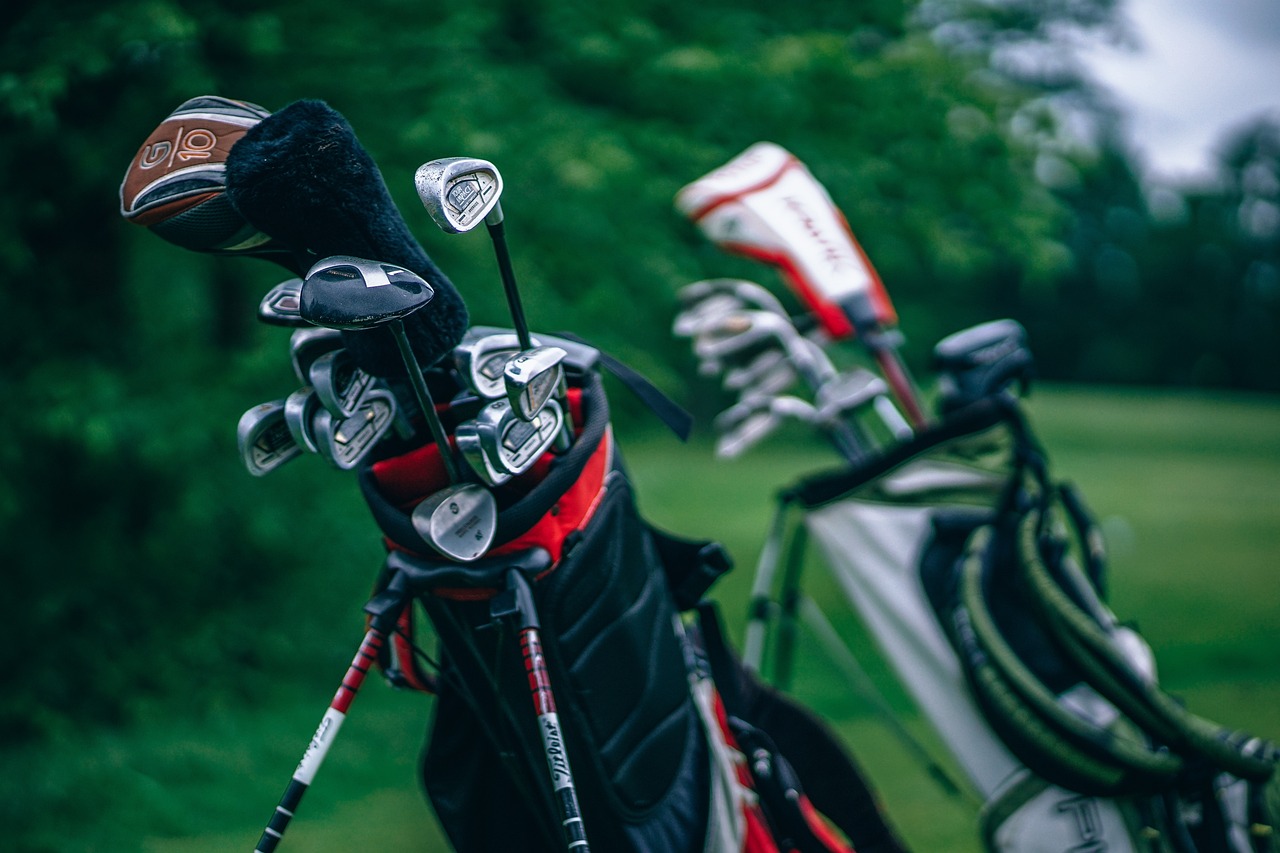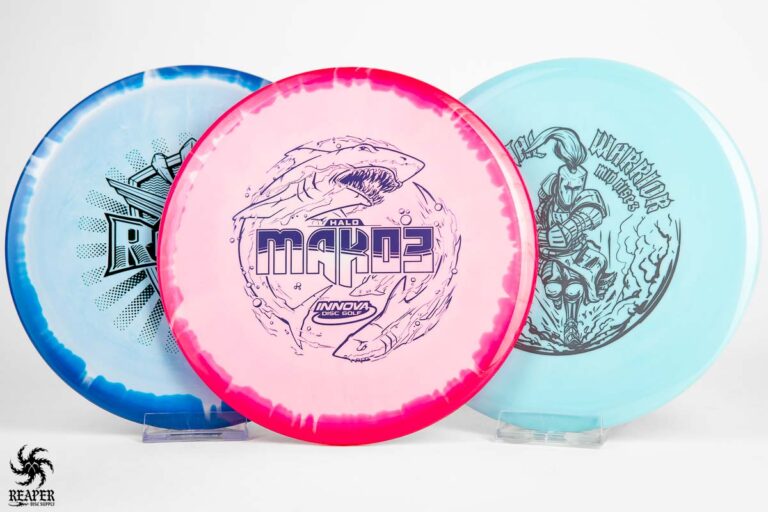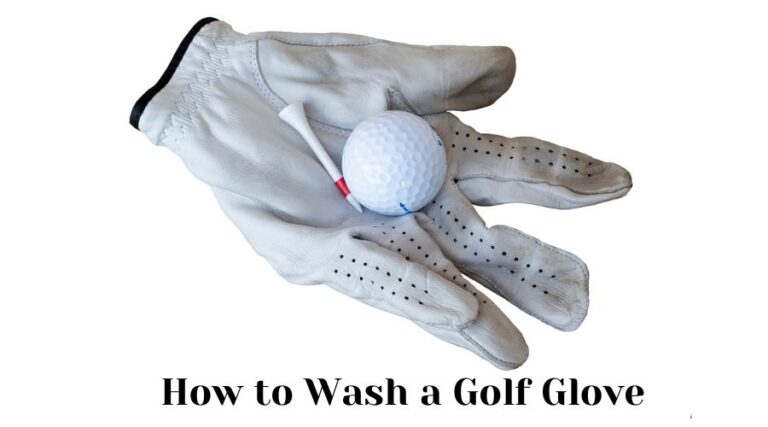Beginners typically need a basic set of golf clubs, including a driver, putter, irons, and wedays. Selecting the right golf clubs involves considering skill level, swing speed, and personal preferences.
Golfers often start with a driver, a putter, irons from three to nine, and a couple of wedges. This essential selection provides a good foundation for learning the game. Choosing the right clubs can enhance your play and enjoyment on the course.
Each club serves a specific purpose, from driving off the tee to putting on the green. Your set can be tailored over time as your skills develop. It’s important to select clubs that match your height and swing style for the best performance.
Contents
- 1 Teeing Off: Starting Your Golf Journey
- 2 Irons And Wedges: Building Your Core Set
- 3 Hybrids Vs. Woods: Making The Choice
- 4 Specialty Clubs: Filling The Gaps
- 5 Putter Precision: Finishing With Finesse
- 6 Beginner Basics: Essential Clubs To Start
- 7 Advanced Arsenal: Upgrading Your Equipment
- 8 Accessorize Your Game: Additional Gear Considerations
- 9 Custom Fit: Tailoring Clubs To Your Height And Swing
- 10 Budget-friendly Golfing: Cost-effective Club Solutions
- 11 Frequently Asked Questions
- 12 Conclusion
Teeing Off: Starting Your Golf Journey
Embarking on your golf journey sparks a mix of excitement and curiosity. Choosing the right golf clubs is crucial. A well-selected set can enhance your game and boost your confidence on the course. Let’s focus on the essentials for teeing off.
Selecting Your Driver
The driver, often the first club out of the bag, sets the tone for your game. It’s designed for maximum distance off the tee. Look for a driver with a large sweet spot and forgiving nature, especially if you’re a beginner.
- Large head size (between 440cc and 460cc)
- Higher loft (between 10° and 12° for most beginners)
- Adjustable features to fine-tune your launch conditions
Understanding Fairway Woods
Fairway woods come in handy for long shots from the fairway or rough. They can be more forgiving than long irons and are excellent for achieving high-flying shots.
| Club Number | Typical Loft | Usage |
|---|---|---|
| 3-Wood | 15°-18° | Long shots from the tee or fairway |
| 5-Wood | 20°-22° | High shots over obstacles |
| 7-Wood | 21°-24° | Alternative to long irons |
Beginners often prefer woods over long irons for their easier playability and versatility.
Irons And Wedges: Building Your Core Set
Golfers need the right tools to play their best. Irons and wedges form the backbone of any golf set. These clubs are used for a variety of shots from different distances. A balanced set of irons and wedges can make all the difference on the course.
Choosing The Right Irons
Irons range from 2-iron to 9-iron. The lower the number, the longer the distance the ball will travel. A good set should have a mix of irons that suit your skill level and playing style.
- Long irons (2-4) are for distance, but they can be hard to hit.
- Mid irons (5-7) are versatile and used for a variety of shots.
- Short irons (8-9) are for precision and control near the green.
Many players opt for hybrid clubs to replace long irons. Hybrids combine the ease of a wood and the accuracy of an iron.
The Importance Of Wedges
Wedges are key for short-distance shots. They help you get out of tricky spots like sand bunkers and roughs. A good wedge can also give you control and precision on the green.
| Wedge Type | Use |
|---|---|
| Pitching Wedge (PW) | Full shots, chips, and long bunker shots |
| Gap Wedge (GW) | Fills the gap between PW and SW |
| Sand Wedge (SW) | Green-side bunkers and soft lies |
| Lob Wedge (LW) | High shots over hazards and close to the green |
Beginners might start with a PW and SW. More experienced players can add a GW or LW for more options.
Hybrids Vs. Woods: Making The Choice
Choosing the right golf clubs can transform your game. Hybrids and woods are two options that golfers consider for long shots. Both have unique features that can benefit different playing styles. Let’s dive into the benefits of hybrids and when you might opt for woods instead.
Benefits Of Hybrids
Hybrids combine the best features of woods and irons. They are easier to hit for most golfers. Here are some reasons to choose hybrids:
- Easier to control: Hybrids are shorter than woods, making them easier to handle.
- More forgiving: They have a larger sweet spot, which can improve your shots.
- Better from tough spots: Hybrids are great for hitting out of the rough or sand.
- Versatile: You can use them for a variety of shots, both on the tee and the fairway.
Hybrids are a smart choice for beginners and high-handicappers. They can replace long irons, which are harder to hit.
When To Opt For Woods
Woods, including the driver and fairway woods, are ideal for distance. They work well when you need to cover a lot of ground. Consider woods for these situations:
- Teeing off: A driver can give you the longest distance on your first shot.
- Long fairways: Fairway woods can cover ground quickly and roll further.
- Open shots: With fewer obstacles, woods can give you a straight, long shot.
Woods require a good swing technique. Experienced players often prefer them for their potential in adding distance to the game.
Specialty Clubs: Filling The Gaps
Exploring the right golf clubs to perfect your game can be daunting. Specialty clubs bridge this gap by ensuring you have the right tool for every shot on the course.
Every golfer knows the basics: irons, woods, and putters. Yet, specialty clubs often make the real difference in improving your game. These clubs are designed to help in specific situations where standard clubs might not perform well. Understanding which specialty clubs to add to your bag can give you a competitive edge on the course.
Utility Clubs Explained
Utility clubs, also known as hybrids, combine the best features of irons and woods. They are easier to hit than long irons and more versatile than woods. Here are key reasons to use them:
- Better control on long shots
- Higher launch compared to irons
- More forgiveness on mis-hits
Hybrids are ideal for challenging lies, including roughs and sand. They offer a smooth transition from your longest iron to your shortest wood.
Special Wedges For Special Situations
Wedges play a critical role in golf, especially in the short game. Apart from standard pitching and sand wedges, consider these special types:
- Lob Wedge: Great for high, short shots over obstacles.
- Gap Wedge: Fills the distance between a pitching wedge and a sand wedge.
Each wedge offers a unique benefit, depending on the shot you need. For instance, a lob wedge is perfect for shots that require a high arc and soft landing, typically around the green.
Adding the right utility clubs and special wedges to your bag will enhance your performance on the golf course. Choose wisely based on the gaps in your current set and the courses you play most often.
Putter Precision: Finishing With Finesse
Putter Precision: Finishing with Finesse – it’s the crucial moment. Your ball is on the green, and it’s time to finish the job. A golfer’s putter is their best friend in this final play. It’s about making the perfect stroke with the right putter to sink the ball. Choosing a putter that suits your style can make all the difference between a par and a birdie.
Features of a Good PutterFeatures Of A Good Putter
A good putter stands out with its ability to provide a consistent roll and precise aim. Here’s what to look for:
- Balance: The weight distribution should feel comfortable.
- Face Material: Affects the ball’s roll and feel.
- Alignment Features: Aids in targeting the right path.
- Length & Grip: Must match your height and hand size.
- Head Design: Influences stability and forgiveness.
Putter Types And Their Uses
Putters come in various types, each serving a different style of play. Let’s explore:
Table: Putter Types| Putter Type | Features | Best For |
|---|---|---|
| Blade Putters | Thin, classic design with a flat face. | Players with a straight putting stroke. |
| Mallet Putters | Larger heads with more weight at the back. | Golfers seeking extra stability. |
| Peripheral Weighted Putters | Weight distributed around the edges. | Those needing forgiveness on mis-hits. |
| Face-Balanced Putters | Face points upwards when balanced. | Players with minimal rotation in their stroke. |
| Toe-Balanced Putters | Toe hangs downwards when balanced. | Golfers with an arc in their putting stroke. |
Beginner Basics: Essential Clubs To Start
Starting golf can be exciting and a bit overwhelming. Knowing the right clubs to start with is crucial.
Must-have Clubs For New Golfers
As a new golfer, your bag doesn’t need to be full, just equipped with the basics. Focus on a few key types of clubs.
- Driver: Ideal for teeing off on longer holes.
- Irons: Versatile clubs for various shots. Usually, a set from 7 to 9-iron is a good start.
- Wedges: Including at least one sand wedge can help in the bunkers.
- Putter: Essential for getting the ball into the hole on the green.
Selecting the right clubs can be simple with a few tips.
- Start with a driver, putter, and sand wedge.
- Add irons as your game improves. 7, 8, and 9 are great for beginners.
- Consider a hybrid club for difficult long iron shots.
Practice with these clubs to build confidence and skill on the course.
Advanced Arsenal: Upgrading Your Equipment
As you advance in golf, the right equipment becomes crucial. Upgrading your clubs can greatly improve your game. Let’s explore the best choices for experienced golfers.
Identifying Clubs For Experienced Golfers
Seasoned golfers often look for clubs that offer better control and precision. Here are key features to consider:
- Forged Irons: Offer greater control and are usually preferred by players with a lower handicap.
- Adjustable Drivers: Allow you to fine-tune loft and lie angles for optimum performance.
- Tour-level Golf Balls: Designed for advanced play, enhancing spin and control on the greens.
Understanding your skill level helps in choosing the right clubs.
Expanding Your Club Selection With Skill
As skills sharpen, expanding your club set can be beneficial. Consider adding these:
| Club Type | Benefits |
|---|---|
| Hybrids | Easier to hit than long irons and useful in various situations. |
| Wedges | Adding different lofts helps in short game precision. |
| Specialty Putters | Enhance putting technique with a model that suits your stroke style. |
Each club adds a unique angle to your game, helping to tackle different challenges on the course.
Accessorize Your Game: Additional Gear Considerations
Equipping yourself with the right golf clubs is just the start. To truly elevate your game, consider the extras that can make a difference on the course. From the essentials that carry your clubs, to the gadgets that refine your swing, every piece plays a part in your golfing story. Let’s dive into the accessories that can give you an edge.
Golf Bag Essentials
A reliable golf bag is a golfer’s best friend. It should not only store your clubs but also offer convenience and functionality. Here are essentials to pack:
- Golf balls: Always have extra.
- Ball markers: Keep them handy for putting.
- Divot repair tools: Respect the green, repair your marks.
- Gloves: For a better grip in all weather.
- Tees: Different lengths for drivers and irons.
- Rain gear: Don’t let weather stop your game.
- Water bottle: Stay hydrated, stay focused.
Tech Tools For Golf Improvement
Modern technology offers a range of tools to enhance your golf skills:
- Swing analyzers: They provide insights on your swing mechanics.
- GPS watches: Get precise yardages and course layouts.
- Mobile apps: Track scores and analyze performance.
- Launch monitors: Understand ball flight and distances.
These tech tools offer valuable data to refine your game. Combine them with practice for noticeable improvements.
Custom Fit: Tailoring Clubs To Your Height And Swing
Every golfer’s body and swing are unique. Custom fitting golf clubs ensure each player gets the most out of their game. This process matches clubs to your personal attributes, like height and swing style. Let’s dive into how custom-fit clubs can transform your game.
The Impact Of Club Length
Club length is crucial for comfort and performance. The right length helps with:
- Accuracy: Correct club length aligns the ball with the club’s sweet spot.
- Swing Path: It influences how the club moves through the air.
- Posture: Proper length promotes a natural, effective stance.
Clubs too long or short can lead to mishits and discomfort. Custom fitting addresses this by adjusting the length to your height and arm length.
The Personalization Process
Custom fitting involves several steps:
- Measuring your height, arm length, and hand size.
- Analyzing your swing speed and style.
- Selecting the appropriate club head, shaft type, and grip size.
Experts use advanced tools to ensure the clubs fit your personal swing characteristics. This process leads to clubs that feel like an extension of your body.
A well-fitted set of golf clubs can make a big difference on the course. Consider custom fitting to see improvements in your game.
Budget-friendly Golfing: Cost-effective Club Solutions
Starting a golf journey doesn’t have to break the bank. Smart choices lead to a bag filled with value-packed clubs. Let’s dive into finding those gems that keep your wallet happy without compromising on the green.
Finding Value In Golf Clubs
Quality doesn’t always mean costly. Several brands offer excellent options that won’t cost a fortune. Look for last season’s models or pre-owned clubs with lots of life left. These can perform just as well as the latest releases.
- Check online marketplaces for deals.
- Visit local pro shops for discounted rates.
- Consider complete set deals.
Remember, a shiny brand name is not always the answer. Focus on clubs that suit your play style and skill level.
When To Invest More In Your Clubs
As your skills grow, so might your need for better equipment. Certain clubs, like a reliable putter or a versatile wedge, can shave strokes off your game. These are worth the extra investment.
| Club Type | Investment Level | Reason |
|---|---|---|
| Putter | Higher | Accuracy on the greens is crucial. |
| Driver | Moderate | A well-fitted driver can improve distance. |
| Wedges | Higher | Control and versatility near the green matter. |
Consider club fitting to ensure your investment is well-placed. Custom fitting matches clubs to your swing, offering immediate improvements.
Frequently Asked Questions
How Do I Choose Which Golf Club To Use?
Select your golf club based on distance to the hole and your own shot distance. Use longer clubs for greater distances, and shorter clubs for precision shots. Consider the club’s loft for ball trajectory and control. Practice with each club to understand its range and when to use it.
How To Figure Out What Golf Clubs To Buy?
Assess your skill level and playing style to determine club types. Consider club fitting to match your physique and swing. Research and test different brands for feel and performance. Prioritize essential clubs like drivers, irons, wedges, and a putter. Set a budget to narrow choices.
How To Choose Golf Clubs For Your Height?
To select golf clubs for your height, measure your height and wrist-to-floor distance. Use these measurements to consult a fitting chart for appropriate club length. Choose clubs that match these specifications for optimal comfort and swing accuracy.
What’s Easier To Hit, Hybrid Or Wood?
Hybrids are generally easier to hit than woods due to their more forgiving nature and versatile design.
Conclusion
Selecting the right golf clubs is crucial for enhancing your game. Start with the basics: a driver, a putter, and irons. Remember to consider your skill level and specific needs. Tailoring your bag with the right clubs ensures not only improvement in your game but also maximizes your enjoyment on the course.
Always choose wisely and keep swinging towards better golf!






